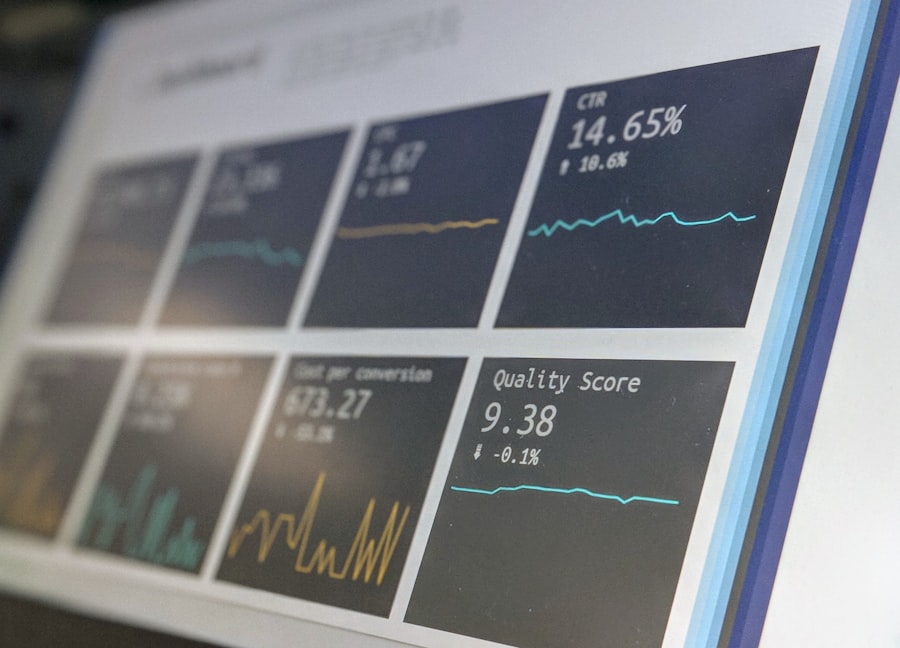Search Engine Optimization (SEO) is a multifaceted discipline that aims to enhance a website’s visibility in search engine results pages (SERPs). At its core, SEO involves a series of strategies and techniques designed to improve the ranking of a website for specific keywords or phrases. The primary goal is to attract organic traffic, which is crucial for businesses and content creators looking to reach a wider audience without relying on paid advertising.
Understanding the fundamentals of SEO is essential for anyone looking to establish a robust online presence. The mechanics of SEO can be broken down into three main components: on-page SEO, off-page SEO, and technical SEO. On-page SEO refers to the optimization of content and HTML source code on a website, including elements like title tags, meta descriptions, and header tags.
Off-page SEO encompasses activities that occur outside the website, such as link building and social media engagement, which help to establish authority and credibility. Technical SEO focuses on the backend aspects of a website, ensuring that it is crawlable and indexable by search engines. Each of these components plays a vital role in determining how well a website performs in search rankings.
Key Takeaways
- SEO fundamentals are essential for improving website visibility and ranking.
- High-quality, relevant content attracts and retains visitors.
- Strategic keyword use enhances search engine relevance.
- A well-organized website structure improves user experience and crawlability.
- Continuous monitoring and adapting to SEO trends ensure sustained success.
Creating Quality Content
Content is often heralded as the cornerstone of effective SEO. High-quality content not only engages users but also signals to search engines that a website is a valuable resource. To create content that resonates with both audiences and search engines, it is essential to focus on relevance, originality, and depth.
This means producing articles, blog posts, videos, or infographics that provide genuine value to readers, addressing their questions or solving their problems. For instance, a well-researched blog post on “The Benefits of Organic Gardening” can attract gardening enthusiasts and rank well in search results if it offers unique insights and actionable tips. Moreover, the format and presentation of content are equally important.
Utilizing headings, bullet points, and images can enhance readability and user experience. Search engines favor content that is easy to digest, as it keeps users engaged longer. Additionally, incorporating multimedia elements such as videos or podcasts can cater to different learning styles and preferences, further enriching the user experience.
A comprehensive guide that includes step-by-step instructions alongside visual aids can significantly increase the likelihood of shares and backlinks, amplifying its reach.
Utilizing Keywords Effectively

Keywords are the foundation of SEO; they are the terms and phrases that users enter into search engines when seeking information. Effective keyword utilization involves thorough research to identify relevant keywords that align with user intent. Tools like Google Keyword Planner, SEMrush, and Ahrefs can help uncover high-volume keywords with manageable competition.
Once identified, these keywords should be strategically integrated into various elements of the website, including titles, headings, and throughout the content itself. However, it is crucial to avoid keyword stuffing, which can lead to penalties from search engines. In addition to primary keywords, incorporating long-tail keywords—more specific phrases that typically have lower search volume but higher conversion rates—can be beneficial.
For example, instead of targeting the broad keyword “shoes,” a more specific long-tail keyword like “best running shoes for flat feet” can attract a more targeted audience. This approach not only improves the chances of ranking higher in SERPs but also enhances the likelihood of converting visitors into customers by addressing their specific needs.
Optimizing Website Structure and Navigation
| Metric | Description | Recommended Value/Goal | Impact on Website |
|---|---|---|---|
| Average Click Depth | Number of clicks needed to reach a page from the homepage | 3 clicks or fewer | Improves user experience and crawlability |
| Navigation Menu Items | Number of main navigation links | 5-7 items | Prevents overwhelming users and improves clarity |
| Breadcrumb Usage | Presence of breadcrumb navigation on pages | Implemented site-wide | Enhances user orientation and SEO |
| Internal Linking Ratio | Ratio of internal links to total links on a page | High internal linking (50%+) | Distributes link equity and improves navigation |
| Page Load Time | Time taken for a page to fully load | Under 3 seconds | Reduces bounce rate and improves user satisfaction |
| Mobile Navigation Usability | Ease of navigation on mobile devices | Score 90+ on mobile usability tests | Improves accessibility and engagement on mobile |
| URL Structure | Clarity and hierarchy in URLs | Short, descriptive, and hierarchical URLs | Improves SEO and user understanding |
| Search Function Usage | Percentage of users utilizing site search | Varies by site; higher usage indicates need for better navigation | Helps identify navigation gaps |
A well-structured website is essential for both user experience and SEO performance. The architecture of a website should facilitate easy navigation for users while also allowing search engines to crawl and index its pages efficiently. A logical hierarchy with clear categories and subcategories helps users find information quickly and encourages them to explore more pages on the site.
For instance, an e-commerce site might organize products by type, brand, or price range, making it easier for customers to locate what they are looking for. In addition to a clear structure, optimizing internal linking is crucial for enhancing navigation and distributing page authority throughout the site. Internal links connect related content within the website, guiding users to additional resources while signaling to search engines which pages are most important.
Furthermore, ensuring that the website is mobile-friendly is paramount in today’s digital landscape. With an increasing number of users accessing websites via mobile devices, responsive design not only improves user experience but also positively impacts search rankings.
Building Quality Backlinks
Backlinks are links from other websites that point to your site; they serve as endorsements of your content’s credibility and authority. Search engines view backlinks as a vote of confidence, which can significantly influence a site’s ranking in SERPs. However, not all backlinks are created equal; quality matters more than quantity.
A backlink from a reputable site within your industry carries more weight than numerous links from low-quality or unrelated sites. To build quality backlinks, it is essential to engage in outreach efforts that foster relationships with other content creators and influencers in your niche. Guest blogging is one effective strategy; by contributing valuable content to another site in exchange for a backlink, you can tap into new audiences while enhancing your own site’s authority.
Additionally, creating shareable content—such as infographics or comprehensive guides—can naturally attract backlinks as others reference your work in their own articles. Monitoring your backlink profile using tools like Moz or Ahrefs can help identify opportunities for improvement and ensure that your link-building efforts are yielding positive results.
Utilizing Social Media for SEO

Social media platforms play an increasingly significant role in SEO strategies. While social signals—likes, shares, and comments—do not directly influence search rankings, they can drive traffic to your website and increase visibility. When content is shared on social media, it has the potential to reach a broader audience, leading to more backlinks and engagement metrics that search engines consider when ranking pages.
To leverage social media effectively for SEO purposes, it is important to create shareable content that resonates with your target audience. Engaging visuals, compelling headlines, and interactive elements can encourage users to share your posts across their networks. Additionally, maintaining an active presence on social media platforms allows you to engage with your audience directly, fostering community and encouraging discussions around your content.
This interaction not only builds brand loyalty but also enhances your site’s authority in the eyes of search engines.
Monitoring and Analyzing Performance
Monitoring and analyzing the performance of your SEO efforts is crucial for understanding what works and what needs improvement. Tools like Google Analytics provide valuable insights into user behavior on your site, including metrics such as bounce rate, average session duration, and conversion rates. By analyzing this data, you can identify which pages are performing well and which may require optimization.
In addition to Google Analytics, utilizing Google Search Console can help track how your site appears in search results. This tool provides information on keyword performance, click-through rates (CTR), and any issues that may hinder your site’s visibility. Regularly reviewing these metrics allows you to make informed decisions about your SEO strategy, enabling you to adapt to changing trends or user preferences effectively.
Staying Updated with SEO Trends and Best Practices
The world of SEO is dynamic; algorithms change frequently as search engines strive to deliver better results for users. Staying updated with the latest trends and best practices is essential for maintaining a competitive edge in this ever-evolving landscape. Following reputable SEO blogs such as Moz, Search Engine Journal, or Neil Patel’s blog can provide valuable insights into emerging strategies and algorithm updates.
Participating in online forums or attending industry conferences can also enhance your understanding of current trends while allowing you to network with other professionals in the field. Engaging with the SEO community fosters knowledge sharing and collaboration that can lead to innovative approaches in optimizing websites for search engines. By remaining proactive in your learning and adapting your strategies accordingly, you can ensure that your SEO efforts continue to yield positive results over time.




